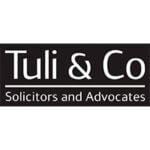-
What mechanism do insurance policies usually provide for resolution of disputes between the insurer and policyholder?
Usually, the terms decide that coverage disputes should be handled by the regular courts in Norway. If both parties have been represented by attorneys, the case will normally start in the City Court.
-
Is there a protocol governing pre-action conduct for insurance disputes?
No, but the claimant may ask the Norwegian Financial Services Complaints Board (Norw. Finansklagenemnda or FinKN) to handle the dispute before it is referred to the court. FinKN handles a lot of coverage disputes, and the decisions from FinKN are normally accepted by the insurers. FinKN will only handle disputes that can be resolved without an oral hearing and without assessing much evidence.
-
Are local courts adept at handling complex insurance disputes?
Yes, Norwegian Courts handle a lot of complex insurance disputes, and disputes regarding tort law and insurance law represents a big part of the few cases that the Norwegian Supreme Court handles every year.
-
Is alternative dispute resolution mandatory?
There is no rule under Norwegian dispute law stating that alternative dispute resolution is mandatory in general. However, according to the Norwegian Dispute Act section 8-3 the court “shall” decide to conduct judicial mediation when it finds that the case is suitable for it. The provision was changed in 2023 in which the wording “may” was replaced with “shall”. The intention is to establish an obligation for the courts to consider whether mediation should be conducted and signals a clear expectation from the legislator that mediation should be attempted in more cases than today. However, in the court’s assessment of whether the case is suitable for judicial mediation or not it shall consider the parties’ view on mediation and the possibilities of reaching a settlement or simplifying the case. In addition, the court is also obliged to place emphasis on whether there is an imbalance of strength between the parties, the costs of judicial mediation, previous judicial mediation attempts, or other circumstances that make judicial mediation questionable.
Furthermore, although alternative dispute resolution is not mandatory in Norway, except where the court has decided to conduct judicial mediation as explained above, the parties are nonetheless obliged pursuant to section 5-4 of the Dispute Act to investigate whether it is possible to resolve the dispute amicably before initiating legal proceedings, and make further attempts to do so, possibly through mediation by the Norwegian Conciliation Board (Norw. Forliksrådet), out-of-court mediation, or by bringing the dispute before an out-of-court dispute resolution body. If a party opposes adequate attempts to reach an amicable solution or rejects a reasonable settlement offer, it may have negative consequences for a subsequent decision on legal costs for that party.
-
Are successful policyholders entitled to recover costs of insurance disputes from insurers?
Yes, in Norway the main rule is that the succeeding party in a court case will be entitled to have its reasonable and necessary costs covered by the losing party. That means that both the successful policyholder and the successful insurer may be awarded compensation for the costs from the other party.
-
Is there an appeal process for court decisions and arbitral awards?
Decisions from the City Court may, as a main rule, be appealed to the Court of Appeal. Exemptions are made in cases that solely concern economical questions and has a monetary value of less than NOK 250.000. In these cases, consent from the Court of Appeal is required. In assessing whether consent should be granted, the Court of Appeal shall consider, inter alia, the nature of the case, the parties’ need for review, and whether there appear to be weaknesses in the decision being appealed or in the handling of the case. Further, an appeal against a judgment may be denied when the Court of Appeal finds that there is a clear preponderance of probability that the appeal will not succeed. A decision from the Court of Appeal may be appealed to the Supreme Court, but such an appeal cannot be submitted without consent. Consent shall only be granted when the appeal pertains to questions that have significance beyond the specific case, or when there are other reasons that make it particularly important to have the case decided by the Supreme Court.
As a main rule, arbitral Awards may not be appealed.
-
How much information is the policyholder required to disclose to the insurer? Does the duty of disclosure end at inception of the policy?
In connection with the conclusion or renewal of an insurance agreement, the insurance company may request information about matters that may be relevant to its risk assessment. The policyholder must provide accurate and complete answers to the company’s questions. Additionally, the policyholder must voluntarily disclose information about specific circumstances that they understand are of significant importance for the company’s risk assessment.
The duty of disclosure does not end at inception of the policy.. If the policyholder at a later stage becomes aware that they have provided incorrect or incomplete information regarding the risk, they must promptly notify the insurance company without undue delay.
-
What remedies are available for breach of the duty of disclosure, and is the policyholder’s state of mind at the time of providing the information relevant?
If the policyholder has fraudulently neglected to provide information according to their duty, and an insurance event has occurred, the insurance company is not liable to pay anything to the policyholder.
If the policyholder has otherwise neglected their duty to provide information, and it is not merely a minor omission, the insurance company’s liability towards the policyholder may be reduced or waived.
In the assessment, factors such as the significance of the error for the insurance company’s risk assessment, the degree of fault, the course of the damage, and other relevant circumstances are taken into account.
-
Are certain types of provisions prohibited in insurance contracts?
In general, it is up to the parties in an insurance contract to decide the provisions of the contract. There are however some restrictions in The Norwegian Insurance Act.
If the insurer wants to be able to reduce the compensation due to negligence that is not gross, it must apply specific safety codes. An insurer cannot apply regulations to limit the responsibility through objective clauses.
In consumer insurance the insurer has a very narrow room for clauses that identifies the insured with the negligence of another person.
Further, in the personal lines, insurer cannot make exemptions for negligent behaviour of the insured by using objective clauses.
In life insurance, the insurer cannot exempt all illness that was present at the beginning of the contract. The insurer must ask questions related to the insureds health and can only except illness discovered through the answers.
In consumer insurance the Norwegian Insurance Act is mandatory.
-
To what extent is a duty of utmost good faith implied in insurance contracts?
A duty of utmost good faith is implied in all contract law in Norway.
In Norwegian contract law there is tradition for less text and clauses than what we see in the Anglo-American tradition. If an insurer wants to make exemptions it must nevertheless be clearly specified in the contract. The Contra proferentem doctrine will imply that the contract is interpreted against the party that made the contract.
-
Do other implied terms arise in consumer insurance contracts?
According to The Norwegian Insurance Contracts Act (the ICA) the insurer is, if considered an insurance distributor, obliged to identify the insured’s need for insurance both prior to entering the insurance contract and under renewal. The ICA also establishes an overarching requirement for professional conduct for those offering insurance cf. the ICA section 1-5. The insured may also under certain conditions claim compensation for losses resulting from breaches by the insurer of its statutory duties pursuant to section 1-5, cf. section 21-2.
-
Are there limitations on insurers’ right to rely on defences in certain types of compulsory insurance, where the policy is designed to respond to claims by third parties?
Yes. According to the Norwegian Insurance Contracts Act (the ICA) section 7-7 second paragraph the insurer cannot assert objections that it could have made against the insured, if it knows or should know that it concerns a compulsory liability insurance. However, the limitation on objections probably does not apply to any part of the insurance coverage that is more extensive than the requirements of the legal basis. Limitations in the insurance’s risk area, insurance sum, deductible, etc., can in principle be invoked by the insurer. This requires that the insurance fully meets the requirements set out in the liability insurance’s legal basis. Consequently, the company cannot deduct the deductible from the compensation to the injured third party if the legal basis does not allow it.
-
What is the usual trigger for cover under insurance policies covering first party losses, or liability claims? Are there limitation periods for the commencement of an action against the insurer?
The usual trigger for cover under liability claims is negligence from the insured. When the liability is strict, for instance related to pollution, the trigger would be the accident, the injury or the damage.
There are limitations periods for the commencement of an action against the insurer.
The insured loses the right to compensation unless the claim has been notified to the insurer within one year after the insured has acquired knowledge of the circumstances that justify the claim. Furthermore, when the insurer rejects a claim wholly or in part, the insured loses the right to compensation unless legal action is brought within six months after the insured received notification in writing of the rejection. Thus, the insured must take legal steps within six months after the rejection to avoid limitation. The insured may also file a complaint to the Norwegian Financial Services Complaints Board (Norw. Finansklagenemnda or FinKN) within the same period of six months to avoid the claim being time barred.
In general, the limitation rule under Norwegian insurance law is that a claim for compensation will be time barred after three years. The limitation period starts at the end of the calendar year in which the insured has acquired the necessary knowledge of the circumstances that justify the claim. However, there is an absolute limitation period of 10 years from the year when the insurance event occurred.
The abovementioned specific rules apply in addition to the general limitation rules under Norwegian insurance law. Consequently, the latter normally will have less significance in practice because most issues that otherwise would have been solved by these general rules, are solved by the specific rules.
In liability insurance, the insurer’s liability is time barred according to the same rules that apply to the insured’s liability for damages. The purpose is to ensure that an injured third party cannot be met with the defence that the insured’s claim against the insurer is time barred, if the injured third party’s own claim against the insured is still valid. However, the injured third party in liability insurance must still interrupt the limitation period separately both against the insured and against the insurer.
-
Which types of loss are typically excluded in insurance contracts?
Typically, the losses are excluded or limited by level of compensation, type of loss or the closeness to the cause of the loss. In different contracts it will vary how the loss is limited, and different combinations may apply. Regulations in general Norwegian contract law/Norwegian Standards (NS) will exclude some types of losses in business insurance.
In private motor insurance, depreciation (decrease in value) will not be compensated. Nor will loss of income due to the breakdown of the car be compensated. Damage caused when the vehicle is requested by public authority can be excepted. In building insurance typical exceptions might be damage to greenhouse, plantation, outdoor waterpool and wooden jetty. In personal insurances different illnesses can be excepted. For instance, may scars and damage to teeth be exempted in child insurance.
-
Do the courts typically construe ambiguity in policy wordings in favour of the insured?
The courts in Norway does typically construe ambiguity in policy wordings in favour of the insured. The Norwegian rule of ambiguity is a rule of interpretation that has traditionally been of great significance in the interpretation of policy wordings. It implies that in cases of doubt, the interpretation that is unfavourable to the party who formulated the terms should be chosen. It derives from the principle that terms should be interpreted against the party who should have formulated them more clearly. In the context of insurance, the rule means that ambiguous policy wordings must normally be interpreted against the insurer, i.e. in favour of the insured. The insurer has formulated the insurance terms and is therefore in the best position to limit and specify the risk it is willing to bear. However, it should not be used in every case where there is some ambiguity in the policy wordings. It is not sufficient to apply this rule only because there may arise situations where the result may immediately seem less satisfactory (the Norwegian Supreme Court judgement Rt. 1987 s. 744). In addition, the rule of ambiguity is not the only rule of interpretation or consideration in interpreting policy wordings. Sometimes it may be more prudent to base the solution on the use of other rules or considerations such as e.g. background law (e.g. the Norwegian Supreme Court judgement Rt. 2000 s. 1049).
-
Does a ‘but for’ or ‘proximate’ test of causation apply, and how is this applied in wide-area damage scenarios?
The main test of causation in Norwegian practice is a “but for” test. If the factor is necessary and neither unessential nor unforeseen, the factor will be held responsible and considered the cause. If the proximate test still applies in some parts of the insurance business is discussed. Historic background being that the primary factor was considered the cause. In wide area damage scenarios, the responsibility could be limited by either one of the theories of causation.
-
What is the legal position if loss results from multiple causes?
If loss results from multiple causes, all the causes may be considered liable for the total loss. The Norwegian Compensation Act would then provide rules for distribution of the loss amongst the tortfeasors, considering the basis of liability and other factors. From this main rule there are several modifications regarding different branches of the insurance business.
Practice from the Norwegian Supreme Court suggests that personal injury caused by multifactorial causes should not be compensated. If anxiety and social conditions are cooperative causes to the persisting health problems of the claimant, the accident is considered insignificant, and compensation is denied.
In Norwegian social security law, the doctrine of main course is sustained.
Under the Norwegian Insurance Act there might be argued that a main cause doctrine still is the legal basis. Norwegian Natural Perils Pool states that when to causes is necessary for the natural damage, only the main cause is considered responsible. Only if the cause is a covered risk insurer is responsible.
-
What remedies are available to insurers for breach of policy terms, including minor or unintentional breaches?
Several remedies are available to insurers for breach of policy conditions depending on the type of breach and, in some cases, the type of insurance. If insurance fraud is proved by the insurer, the policy would typically be terminated, and compensation denied. Specific rules in The Norwegian Insurance Contract Act (the ICA) will apply if the insured fail to pay the insurance premium.
If the insured under a casualty insurance in the claim settlement deliberately provides wrongful or incomplete information that he/she must understand may lead to a settlement he/she is not entitled to, he/she will lose all rights to compensation. The insured will as the main rule lose not only the compensation for the items involved in the fraudulent act, but any claims against the insurer for any insurance agreement connected to the same incident. The regulations are found in The Norwegian Insurance Act paragraph 8-1, section four.
If the premium is not paid before the time limit for payment has come, and the insureds responsibility is ongoing, the insurer must send a new notice of premium with no less than 14 days for payment to be free of responsibility. The notice must clearly state that the insurance will be determined if premium is not paid in time.
Reduction of the claim is possible where the insured fails to fulfil conditions of care for the insured item. Under a casualty insurance the claim may be reduced or lost if the insured has acted with gross negligence. If the insured in personal insurance contributes to the accident by gross negligence, the liability of the insurers may be reduced or dropped. This may also be the result if the insured has caused the incident through the breach of a safety regulation.
With regard to minor or unintentional breach of policy terms, the main rule in Norway is that the insureds minor or unintentional breach of policy terms, will not reduce their right to payment. This is especially the rule for consumer insurances, both related to casualty and personal insurance.
In the policies for trade insurances, insurers cannot except minor or unintentional breach of policy terms from coverage. Even when it comes to the safety regulations, the insureds breach of policy needs to be significant. In a ruling from The Norwegian Supreme Court (HR-2004-1719) the court decided that the right to compensation was lost. In this case there was a breach of the safety regulations regarding staffing of a value transport, and both parties agreed that the insured had acted with gross negligence.
-
Where a policy provides cover for more than one insured party, does a breach of policy terms by one party invalidate cover for all the policyholders?
The Norwegian Insurance Contracts Act (the ICA) regulates when a breach from one person affects the rights of another person under the insurance cover. As a main rule the regulation implies that insurer cannot assert a breach from one of the policyholders to refuse a claim from another. Identification is for consumers allowed in some detailed exceptions for motor- and house insurances, cf. section 4-11.
For trade insurances the insurer may in the insurance terms, with some limitations, decide that the insured partly or in full will lose his claim as a consequence of actions or omissions from specified persons or groups of persons, cf. section 4-11. These persons will normally be leading individuals in in the insured company.
-
Where insurers decline cover for claims, are policyholders still required to comply with policy conditions?
Where insurers decline cover for claims, the policyholders would still be required to comply with policy conditions.
-
How is quantum assessed, once entitlement to recover under the policy is established?
The assessment of the quantum differs in tort law and insurance law. The main rule in tort law is that the claimant should be compensated in full for his individual loss. In a personal injury case, the claimant should be fully compensated for occurred and future loss of income, expenses and for permanent medical disability. The range of controversial points are substantial as Norwegian tort law is mainly based on case law. Any payment that the injured party has received from the public Social Security will be deducted from the claim. The Social Security is not entitled to claim recourse from the tortfeasor for its payments to the injured party.
Under the insurance law the controversial points are more limited as most policies within the personal lines operate with fixed sums for compensation. When it comes to health insurances the parties might disagree if the disease occurred before the policy was set in force. In accident insurances it for example can be argued how significant the injury is according to the disablement table.
-
Where a policy provides for reinstatement of damaged property, are pre-existing plans for a change of use relevant to calculation of the recoverable loss?
Normally, the compensation will be based on the reinstatement costs. Pre-existing plans for change might be relevant to the calculation of recoverable loss under property insurance. Conditions about denial of compensation for property about to be replaced could be considered legal. Given the strict regulations for protection of consumers, the plan for change must be quite definite before such terms are upheld. For buildings or part of buildings the compensation will be limited to the parts of the building that was useful prior to the insurance incident. Expenses for demolition that the insured would have had even if the incident did not occur, are excluded from compensation.
Conditions limiting insurers liability for old parts of the building is common in Norwegian practice. By example, if an insurance event occurs as a consequence of the wear and tear of old pipes for leading water in and out of the house, the compensation for these pipes will be reduced according to their reduced value.
Other pre-existing plans are not relevant to the calculation of the recoverable loss. If the policy holder rebuilds a building with a different purpose than what the damaged building had, the compensation will normally be based on the market value of the damaged building and not on the reinstatement costs.
-
After paying claims, are insurers able to pursue subrogated recoveries against third parties responsible for the loss? How would any such recoveries be distributed as between the insurer and insured?
Insurers may, in accordance with the main rule in Norwegian law, pursue subrogated recoveries against a third party that is responsible for the loss. Denial of recourse requires a proper legal basis.
However, there are some limitations regarding insurers right to pursue subrogated recoveries against liable third parties when the damage can be covered by a property damage insurance or other financial loss insurance, cf. the Norwegian Damage Compensation Act section 4-3, cf. section 4-2. The limitations reflect the injured party’s own right to compensation against the liable third-party cf. section 4-2.
In summary, the insurer cannot pursue subrogated recoveries if the liable third party has only shown minor negligence or if the third party is strictly liable. In addition, the insurer cannot pursue subrogated recoveries if the damage was not caused during the third party’s business activities, i.e. as a private individual. To the extent that the injured party is precluded from claiming coverage from the liable third party pursuant to section 4-2, the third party’s liability insurer is also protected against recourse claims from the injured party’s insurer for property and financial loss.
After the insurer has paid the insured’s claim, there is generally no distribution of the recoveries between the insurer and the insured. However, most policies exclude deductible from the settlement, and thus also from the recourse process. If the insured wants to claim the deductible by the third party, the insured must pursue this on its own. However, deviating solutions may be agreed between the insurer and the insured regarding collection of the deductible in practice.
In insurance for workers compensation insurer may claim for recoure against any third party responsible for the loss. According to The Workes Compensation Act Section 8 first paragraph, the employer is however not responsible towards the employee (or the insurer) for claims made according to the Act.
-
Is there a right to claim damages in the event of late payment by an insurer?
There is a right to claim interest in the event of late payment by an insurer pursuant to the Norwegian Insurance Contracts Act section 8-4. The insured may claim interest on outstanding claims as from two months after the notification of the insurance event was sent to the insurer. The purpose of the rule is to provide the insured with compensation for the interest loss he or she suffers while waiting for the insurance company’s compensation payment.
For legal technical purposes this compensation is standardized and does not aim to cover the individual’s actual interest loss.
-
Can claims be made against insurance policies taken out by companies which have since become insolvent?
There are no specific rules in Norway that the insured company must be solvent as a condition for raising a claim under the policy. The policies are not set out of force because the insured becomes insolvent.
-
To what extent are class action or group litigation options available to facilitate bulk insurance claims in the local courts?
The class action (or group litigation) option is available in Norway and can be used to facilitate bulk insurance claims in local courts on certain conditions pursuant to the Norwegian Dispute Act section 35-2. Firstly, the members of the class action must constitute several legal persons that have claims or obligations for which the factual or legal basis is identical or substantially similar. Secondly, the claims must be able to be heard by a court with the same composition and principally in accordance with the same procedural rules. Thirdly, class procedure must be the most appropriate method of hearing the claims. Finally, it must be possible to nominate a class representative pursuant to section 35-9. In addition to these requirements, the court must approve the action as a class action, cf. section 35-1 second paragraph. In the insurance context, an example of class action is the Norwegian Supreme Court’s judgement HR-2012-02213-A. The case concerned traffic victims’ claim for compensation from the Norwegian state for the failure to implement the EEA Agreement’s Motor Vehicle Insurance Directive. The case was first brought as a class action by the traffic victims before the Oslo District Court as “the local court”.
-
What are the biggest challenges facing the insurance disputes sector currently in your region?
The biggest challenges in the insurance disputes sector in Norway are, inter alia, the increasing frequency and severity of climate-related events such as extreme weather which in turn are generating more insurance claims and disputes.
Even though AI brings numerous benefits to many sectors including the insurance dispute sector, it also introduces several challenges for instance regarding data privacy and security, e.g. ensuring compliance with GDPR.
-
How do you envisage technology affecting insurance disputes in your jurisdiction in the next 5 years?
Technology is increasingly affecting the insurance industry in Norway. A survey by the Financial Supervisory Authority of Norway (Norw. Finanstilsynet) in 2024 shows that several insurance companies are increasingly using advanced technology methods, including AI, in different parts of business. Although the survey shows that the use of advanced technology at present varies significantly between the insurance companies, it also states that development, use and maintenance of new technology is gradually becoming more important in the insurance companies’ business. Regarding insurance disputes specifically, AI may perhaps in the future be used to analyse large amounts of data to help predict the outcome of insurance claims and disputes, as AI also evolves and becomes more accurate and efficient. Furthermore, the Norwegian courts will shortly start to use AI to streamline and modernise legal proceedings as well as the courts’ internal workflows, which in turn also may contribute resolving insurance disputes in court more efficiently.
Additionally, the insurance sector in Norway is according to Finance Norway (Norw. Finans Norge) at the forefront internationally when it comes to automation due to increased digitalisation. This has also led to increased regulatory requirements and cyber risk, which may perhaps in turn lead to more insurance disputes.
-
What are the significant trends and developments in insurance disputes within your jurisdiction in recent years?
One significant trend in Norwegian insurance disputes is the significant increase in cases before the courts regarding negligence or other liability for Norwegian municipals. Child welfare authorities and Schools are in increasingly numbers taken to court for alleged psychological injuries. The claimants are both persons that has or has not been under public care, former pupils and their parents.
In tort law the claims are becoming more complex. The claims are also becoming larger. Historically, claims have been quite modest in Norway, but we see a clear development in bringing Norwegian law closer to what we see abroad.
The insurance industry is continuing its focus on recourse.
New legislation and practice under The European Union open for disputes in different themes. A common question is if Norwegian Law is in accordance with the compulsory legislation from the EU.
Questions regarding regulatory issues are common in the Norwegian practice.
-
Where in your opinion are the biggest growth areas within the insurance disputes sector?
The biggest growth areas within the insurance dispute sector in Norway is probably the rapidly increasing number of claims made against public administration. There is a wide range of possibilities for errors in public administration that may give cause for insurance dispute within the liability lines. Most local municipals are insured. The government is in most cases self-insured.
As the weather is more unpredictable and more extreme weather is expected, the expectations towards public authorities is elevated. Local plans for development and housing are under siege. Local plans become quickly outdated as a consequence of the climate changes. In the Norwegian practice local municipals has been held responsible for the lack of updated risk information when opening for building homes in areas that later shows a greater risk than estimated.
Norway: Insurance Disputes
This country-specific Q&A provides an overview of Insurance Disputes laws and regulations applicable in Norway.
-
What mechanism do insurance policies usually provide for resolution of disputes between the insurer and policyholder?
-
Is there a protocol governing pre-action conduct for insurance disputes?
-
Are local courts adept at handling complex insurance disputes?
-
Is alternative dispute resolution mandatory?
-
Are successful policyholders entitled to recover costs of insurance disputes from insurers?
-
Is there an appeal process for court decisions and arbitral awards?
-
How much information is the policyholder required to disclose to the insurer? Does the duty of disclosure end at inception of the policy?
-
What remedies are available for breach of the duty of disclosure, and is the policyholder’s state of mind at the time of providing the information relevant?
-
Are certain types of provisions prohibited in insurance contracts?
-
To what extent is a duty of utmost good faith implied in insurance contracts?
-
Do other implied terms arise in consumer insurance contracts?
-
Are there limitations on insurers’ right to rely on defences in certain types of compulsory insurance, where the policy is designed to respond to claims by third parties?
-
What is the usual trigger for cover under insurance policies covering first party losses, or liability claims? Are there limitation periods for the commencement of an action against the insurer?
-
Which types of loss are typically excluded in insurance contracts?
-
Do the courts typically construe ambiguity in policy wordings in favour of the insured?
-
Does a ‘but for’ or ‘proximate’ test of causation apply, and how is this applied in wide-area damage scenarios?
-
What is the legal position if loss results from multiple causes?
-
What remedies are available to insurers for breach of policy terms, including minor or unintentional breaches?
-
Where a policy provides cover for more than one insured party, does a breach of policy terms by one party invalidate cover for all the policyholders?
-
Where insurers decline cover for claims, are policyholders still required to comply with policy conditions?
-
How is quantum assessed, once entitlement to recover under the policy is established?
-
Where a policy provides for reinstatement of damaged property, are pre-existing plans for a change of use relevant to calculation of the recoverable loss?
-
After paying claims, are insurers able to pursue subrogated recoveries against third parties responsible for the loss? How would any such recoveries be distributed as between the insurer and insured?
-
Is there a right to claim damages in the event of late payment by an insurer?
-
Can claims be made against insurance policies taken out by companies which have since become insolvent?
-
To what extent are class action or group litigation options available to facilitate bulk insurance claims in the local courts?
-
What are the biggest challenges facing the insurance disputes sector currently in your region?
-
How do you envisage technology affecting insurance disputes in your jurisdiction in the next 5 years?
-
What are the significant trends and developments in insurance disputes within your jurisdiction in recent years?
-
Where in your opinion are the biggest growth areas within the insurance disputes sector?










